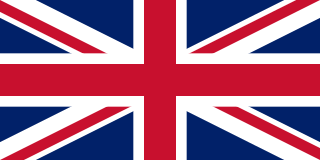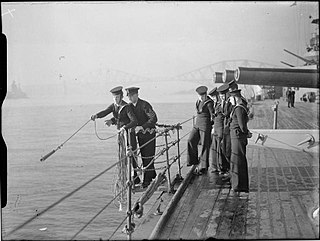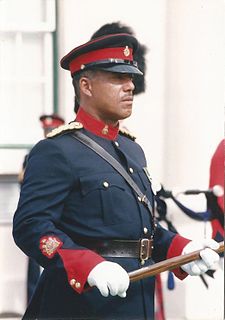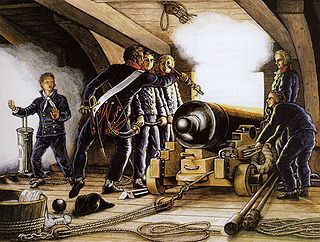 W
WThese are the official Royal Navy Officer ranks ordered by rank. These ranks are part of the NATO/United Kingdom ranks, including modern and past. Past insignia is in italic.
 W
WThis is a list of British Royal Navy ratings rank insignia.
 W
WAdmiral is a senior rank of the Royal Navy of the United Kingdom, which equates to the NATO rank code OF-9, outranked only by the rank of admiral of the fleet. Royal Navy officers holding the ranks of rear admiral, vice admiral and admiral of the fleet are sometimes considered generically to be admirals. The rank of admiral is currently the highest rank to which a serving officer in the Royal Navy can be promoted, admiral of the fleet being in abeyance except for honorary promotions of retired officers and members of the Royal Family.
 W
WThe Admiral of the Blue was a senior rank of the Royal Navy of the United Kingdom, immediately outranked by the rank Admiral of the White. Royal Navy officers currently holding the ranks of commodore, rear admiral, vice admiral and admiral of the fleet are sometimes considered generically to be admirals. From 1688 to 1805 this rank was in order of precedence third; after 1805 it was the fourth. In 1864 it was abolished as a promotional rank. The command flag for an Admiral of the Blue is a plain blue flag.
 W
WAdmiral of the Fleet is a five-star naval officer rank and the highest rank of the Royal Navy formally established in 1688. The five-star NATO rank code is OF-10, equivalent to a field marshal in the British Army or a marshal of the Royal Air Force. Other than honorary appointments no new admirals of the fleet have been named since 1995.
 W
WThe Admiral of the Red was a senior rank of the Royal Navy of the United Kingdom, immediately outranked by the rank Admiral of the Fleet. Royal Navy officers currently holding the ranks of commodore, rear admiral, vice admiral and admiral of the fleet are sometimes considered generically to be admirals. The rank did not exist prior to 1805, as the admiral commanding the Red squadron was called Admiral of the Fleet. When the duties of Admiral of the Fleet were separated from Red squadron in 1805, the Admiral of the Red was created, and until 1864 this rank was the second highest rank in order of precedence. In 1864 it was abolished as a promotional rank.
 W
WThe Admiral of the White was a senior rank of the Royal Navy of the United Kingdom, immediately outranked by the rank Admiral of the Red. Royal Navy officers currently holding the ranks of commodore, rear admiral, vice admiral and admiral of the fleet are sometimes considered generically to be admirals. From 1688 to 1805 this rank was in order of precedence second; after 1805 it was the third. In 1864 it was abolished as a promotional rank..
 W
WA boy seaman is a boy who serves as seaman or is trained for such service.
 W
WCaptain (Capt) is a senior officer rank of the Royal Navy. It ranks above commander and below commodore and has a NATO ranking code of OF-5. The rank is equivalent to a colonel in the British Army and Royal Marines, and to a group captain in the Royal Air Force. There are similarly named equivalent ranks in the navies of many other countries.
 W
WWarrant officer (WO) is a rank or category of ranks in the armed forces of many countries. Depending on the service or historical context, some WOs are classified as the most junior of the commissioned ranks, the most senior of the NCO ranks or in a separate category of their own. However, warrant officer ranks are always senior to non-commissioned officer (NCO) ranks and subordinate to commissioned officer ranks. WO ranks are especially prominent in the militaries of Commonwealth nations and the United States.
 W
WCommodore (Cdre) is a rank of the Royal Navy above captain and below rear admiral. It has a NATO ranking code of OF-6. The rank is equivalent to brigadier in the British Army and Royal Marines and to air commodore in the Royal Air Force.
 W
WAn engine room artificer (ERA) was a fitter, turner, boilermaker, coppersmith or enginesmith in the early days of steam-powered warships. Usually working under an engineer officer, they were able to read and write, competent in the workings of engines and boilers, and trained in the maintenance and operation and uses of all parts of marine engines. ERAs were the senior maintainers and operators of all warship mechanical plant. Around 1916 ERAs could also be placed in charge of small ships as an engineering officer and were also EOs of the watch on destroyers and below for which they received rapid advancement to CPO and extra charge pay of 1/- per day on attaining their "ticket"
 W
WThe master, or sailing master, was a historical rank for a naval officer trained in and responsible for the navigation of a sailing vessel. The rank can be equated to a professional seaman and specialist in navigation, rather than as a military commander.
 W
WIn the Royal Navy, the rank of master of the fleet denoted the sailing master of a fleet flagship, or the senior sailing master in a fleet.
 W
WA powder boy or powder monkey manned naval artillery guns as a member of a warship's crew, primarily during the Age of Sail. His chief role was to ferry gunpowder from the powder magazine in the ship's hold to the artillery pieces, either in bulk or as cartridges, to minimize the risk of fires and explosions. The function was usually fulfilled by boy seamen of 12 to 14 years of age. Powder monkeys were usually boys or young teens, selected for the job for their speed and height: they were short and could move more easily in the limited space between decks and would also be hidden behind the ship's gunwale, keeping them from being shot by enemy ships' sharpshooters. These powder monkeys held no official naval rank on the ships that they sailed on. Some women and older men also worked as powder monkeys.
 W
WRear admiral (RAdm) is a flag officer rank of the British Royal Navy. It is immediately superior to commodore and is subordinate to vice admiral. It is a two-star rank and has a NATO ranking code of OF-7.
 W
WThe Rear-Admiral of the Blue was a senior rank of the Royal Navy of the United Kingdom, immediately outranked by the rank Rear-Admiral of the White. Royal Navy officers currently holding the ranks of commodore, rear admiral, vice admiral and admiral of the fleet are sometimes considered generically to be admirals. From 1688 to 1805 this rank was in order of precedence ninth; after 1805 it was the tenth. In 1864 it was abolished as a promotional rank.
 W
WThe Rear-Admiral of the Red was a senior rank of the Royal Navy of the United Kingdom, immediately outranked by the rank Vice-Admiral of the Blue. Royal Navy officers currently holding the ranks of commodore, rear admiral, vice admiral and admiral of the fleet are sometimes considered generically to be admirals. From 1688 to 1805 this rank was in order of precedence seventh; after 1805 it was the eighth. In 1864 it was abolished as a promotional rank. ..
 W
WThe Rear-Admiral of the White was a senior rank of the Royal Navy of the United Kingdom, immediately outranked by the rank Rear-admiral of the red. Royal Navy officers currently holding the ranks of commodore, rear admiral, vice admiral and admiral of the fleet are sometimes considered generically to be admirals. From 1688 to 1805 this rank was in order of precedence eighth; after 1805 it was the ninth. In 1864 it was abolished as a promotional rank..
 W
WA sea captain, ship's captain, captain, master, or shipmaster, is a high-grade licensed mariner who holds ultimate command and responsibility of a merchant vessel. The captain is responsible for the safe and efficient operation of the ship—including its seaworthiness, safety and security, cargo operations, navigation, crew management, and legal compliance—and for the persons and cargo on board.
 W
WVice-admiral is a flag officer rank of the British Royal Navy and equates to the NATO rank code OF-8. It is immediately superior to the rear admiral rank and is subordinate to the full admiral rank.
 W
WThe Vice-Admiral of the Blue was a senior rank of the Royal Navy of the United Kingdom, immediately outranked by the rank Vice-Admiral of the White. Royal Navy officers currently holding the ranks of commodore, rear admiral, vice admiral and admiral of the fleet are sometimes considered generically to be admirals. From 1688 to 1805 this rank was in order of precedence sixth; after 1805 it was the seventh. In 1864 it was abolished as a promotional rank. The command flag for an Vice-Admiral of the Blue is pictured opposite.
 W
WThe Vice-Admiral of the Red was a senior rank of the Royal Navy of the United Kingdom, immediately outranked by the rank Admiral of the Blue. Royal Navy officers currently holding the ranks of commodore, rear admiral, vice admiral and admiral of the fleet are sometimes considered generically to be admirals. From 1688 to 1805 this rank was in order of precedence fourth; after 1805 it was the fifth. In 1864 it was abolished as a promotional rank..
 W
WThe Vice-Admiral of the White was a senior rank of the Royal Navy of the United Kingdom, immediately outranked by the rank Vice-Admiral of the Red. Royal Navy officers holding the ranks of commodore, rear admiral, vice admiral and admiral of the fleet are sometimes considered generically to be admirals. From 1688 to 1805, this rank was fifth in order of precedence; after 1805, it was the sixth. In 1864, it was abolished as a promotional rank.
 W
WA warrant officer (WO) in the British Armed Forces is a member of the highest group of non-commissioned ranks, holding the Queen's warrant, which is signed by the Secretary of State for Defence. Warrant officers are not saluted as they do not hold the Queen's Commission, however they are to be addressed as 'Sir/Ma'am' by subordinates. Commissioned officers may address warrant officers either by their appointment or as "Mister", "Mrs", or "Ms" and then their last name, e.g. "Mr Smith". Although often referred to along with non-commissioned officers (NCOs), they are not NCOs, but members of a separate group, although all have been promoted from NCO rank.
 W
WWarrant officer (WO) is a rank or category of ranks in the armed forces of many countries. Depending on the service or historical context, some WOs are classified as the most junior of the commissioned ranks, the most senior of the NCO ranks or in a separate category of their own. However, warrant officer ranks are always senior to non-commissioned officer (NCO) ranks and subordinate to commissioned officer ranks. WO ranks are especially prominent in the militaries of Commonwealth nations and the United States.
 W
WWarrant officer (WO) is a rank or category of ranks in the armed forces of many countries. Depending on the service or historical context, some WOs are classified as the most junior of the commissioned ranks, the most senior of the NCO ranks or in a separate category of their own. However, warrant officer ranks are always senior to non-commissioned officer (NCO) ranks and subordinate to commissioned officer ranks. WO ranks are especially prominent in the militaries of Commonwealth nations and the United States.